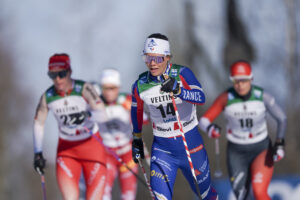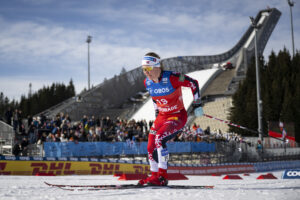That’s Why Klæbo Is So Good: Sharing The Key Training Sessions
It is more than just the content of the training sessions that makes Johannes Høsflot Klæbo so good. But the content plays a role. These are two of his key sessions in the autumn run-up.
While the rest of the national team colleagues were at the Holmenkollen Ski Show this weekend, Johannes Høsflot Klæbo is still at altitude in the USA. There, he mainly runs easy sessions and controlled intervals and generously shares his expertise with the American national team skiers he has trained with in recent weeks.
They note that it is more than the content of the individual sessions that have made the 25-year-old the world’s best cross-country skier and that he has become so young.
“It doesn’t seem like he holds anything back about how he trains,” says Luke Jager, one of the American A national team skiers.
The 22-year-old has been training in group and one-on-one sessions with Klæbo for the past three weeks. And Jager has not wasted a minute of the valuable time with his great role model. He has asked about training, discussed different types of sessions and distribution of different sessions, training intensity, training methods, training amounts, and periodization.
“We have talked a lot about training and different types of training and sessions. There is no hocus pocus on what he is doing. But how he conducts his sessions makes a big difference,” says Jager, adding that he has had some ‘aha’ experiences.
“It is clear that the content matters, and what he does is quite similar to what we do, but the devil is probably a bit in the details. I have never seen anyone so meticulous about everything he does in training. That is probably the biggest difference,” says Jager.
What type of sessions have you trained with Klæbo in recent weeks?
“It is quite traditional cross-country training: Most sessions are about keeping times of plus/minus an hour in a specified zone. But that’s the thing. The difference is that he is so extremely good at working in the right zone all the time. There, I think that both I and quite a few others have a lot to gain,” says Jager and elaborates:
“It’s easy to think that it doesn’t matter so much as long as you’re quite close, especially if you train with others. But if it happens quite often, overall, there will be quite a lot of time that you are not training optimally. So I have become more aware of that by training with Klæbo.”
Can you describe some of the sessions Klæbo prioritizes in this part of the season run-up?
“Yes. The one session we trained one-on-one was a traditional hard session with long intervals on the threshold in the rollerski track in Soldier Hollow. Then we skied controlled, long intervals. The second session was pure double pole intervals, long intervals, and zone three. But even in zone three, he goes insanely fast even at what is a reasonably high altitude for him, so what is controlled zone three for him was more like zone 4 and well so for me,” says Luke Jager, and adds:
“Normally, I’m quite keen to stay at about the right intensity when I run intervals, but I thought that in this particular case, it must be okay to let it slide a little. It’s not that often you have the chance to go with the world’s best cross-country skier.”
These are two of the key sessions for Klæbo in the autumn period.
Session 1
- What: Traditional long intervals/threshold intervals, either classical or skating
- Where: On a rollerski track
- How: First, do an easy warm-up for about half an hour, then 12-minute intervals at up to threshold intensity with one more two-minute break between intervals. Finish with a calm cool down.
- Total time: About an hour, breaks not included
Session 2
- What: Long intervals/threshold interval double poling
- Where: On a country road, in varied but not too steep terrain
- How: Start with an easy warm-up, then four 15-minute double poling intervals at up to threshold intensity with a two to two and a half minute break between the intervals. Finish with a calm cool down.
- Total time: About an hour, breaks not included
Article in cooperation with Langrenn.com










